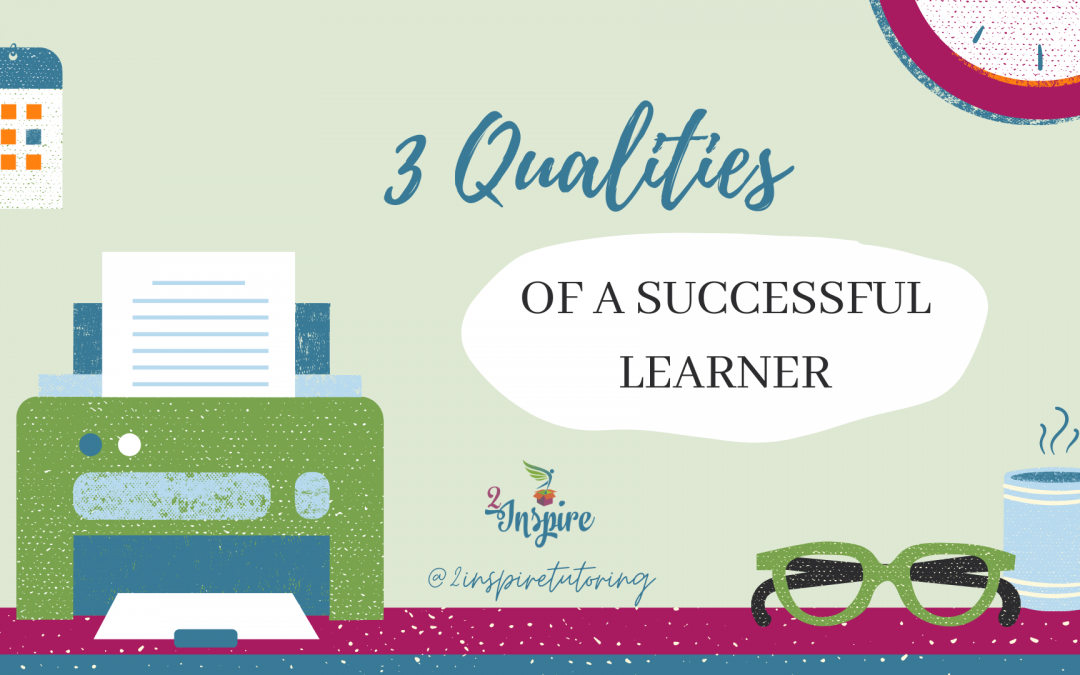Today, I am sharing three qualities that a successful learner needs for success in and out of the classroom.
Whether you are an adult, teen or child, you are constantly learning and growing. Thus, learning is a necessary life-long skill. However, I notice there are two opposing reasons for learning: because you have to and because you want to. True?
The capacity to learn is a gift; the ability to learn is a skill; the willingness to learn is a choice.
Brian Herbert
These opposing reasons often create tension at your home when it comes to your children doing their homework, preparing for tests or exams and setting goals outside of the classroom.
Do you feel like you are wasting energy trying to motivate your children to learn? Cool! Then, you are in the right place.
Read on to discover what the qualities a successful learner has and how you can help foster them in your children.
WHAT DOES A SUCCESSFUL LEARNER LOOK LIKE?
In my experience of teaching and tutoring students from Pre-Primary to Year 10 for over a decade, I have noticed three qualities that are common to a ‘successful learner’.
Firstly, I define a ‘successful learner’ as someone who is inspired to learn, takes consistent action to integrate new skills and recognises their progress. Notice that I don’t use academic grades (or other comparison measurements) to define success.
Three key qualities of a ‘successful learner’ are to:
- Be inspired to learn
- Be comfortable with mistakes
- Celebrate progress
These may not have been what you were expecting, so allow me to elaborate a little.
Being inspired to learn means that a learner wants to learn and believes they can learn. This may sound obvious, but how many of us actively commit to doing something we think we can’t do? Not if we can help it, right? So, instead of feeling frustrated or anxious or overwhelmed, we can help our children to feel confident, courageous and inspired to learn.
A ‘successful learner’ is also comfortable with mistakes because they know mistakes are crucial for success. In fact, they embrace mistakes because they know they are growing and learning. So, instead of avoiding learning opportunities or trying to prove their intelligence, we can help our children by giving them the space to make mistakes and to learn from them.
Finally, another ‘successful learner’ quality is to always celebrate progress because it will help them to enjoy learning and overcome difficulties they may encounter.
Does this make sense?
No matter how academically successful your child is, if they are stuck in the cycle of avoiding new learning opportunities or staying within their comfort zone to prove their intelligence, then will not be a successful, life-long learner.
HOW CAN YOU HELP YOUR CHILD BE A SUCCESSFUL LEARNER?
As parents, you are the key to your child’s success.
Teachers and tutors can do their part to teach your child how to learn, but I believe parents are the ones that show them what learning and growing looks like in reality. No pressure!
STEP 1: Inspired learning
First, ask yourself what ‘success’ looks like for your child. Extend this question to your child too. It should make for an interesting discussion. Once you express your ideas, then take the time to work together to agree on what success is and how your child will know if they are being successful.
This discussion leads directly into how your child will achieve the success they want. Let them brainstorm all the possible ways they can achieve their ‘success’. You can make helpful suggestions here too.
Choose one action they will take and agree on when they will do it and how long for.
STEP 2: Embracing mistakes
Next, examine how comfortable you are about mistakes.
If you are like me, then mistakes may still cause you discomfort and you often excuse, judge or ignore them. You too?
Similarly, when confronted with your child’s mistakes, you may find that you correct, highlight or cover up the mistakes before your child has a chance to self-correct. Don’t worry, you’re not alone.
My discomfort with mistakes caused no end of conflict when my two girls became teenagers. I learned (the hard way) how to give them the space to make mistakes and to talk through how they would learn from them.
Thus, it is important for your child to become comfortable making and talking about their mistakes, so they understand mistakes are part of success. With practice, your child will become better at focusing on the next step or a solution, rather than on the mistake itself.
STEP 3: Celebrating progress
Lastly, to help your child be a ‘successful learner’ for life, I encourage you to become curious about how your child celebrates their ‘success’. Do they celebrate their efforts, the completed task or the recognition they receive?
One of the struggles many parents have with acknowledging ‘success’ is that the school system uses measuring tools like grades and awards. My advice is to praise and reward your child’s effort and progress. This helps your child believe they earned their success and to recognise improvements that cannot be measured by grades or awards.
Therefore, you can help your child to acknowledge their effort and the progress they are making so they continue towards becoming a life-long, successful learner.
When we know better, we do better.
Maya Angelou
MAKE SURE YOU FEEL SUPPORTED
If you are looking for further assistance about how to support your child to become a ‘successful learner’, then please join my mailing list here and come join us in a free Facebook support group for parents.
If you would like me to help your child learn the qualities of a successful learner, then I teach them in my Mindset Zero to Hero course. For more information, please connect with me here.
I look forward to connecting with you and your child soon.
Best wishes, Tara.

